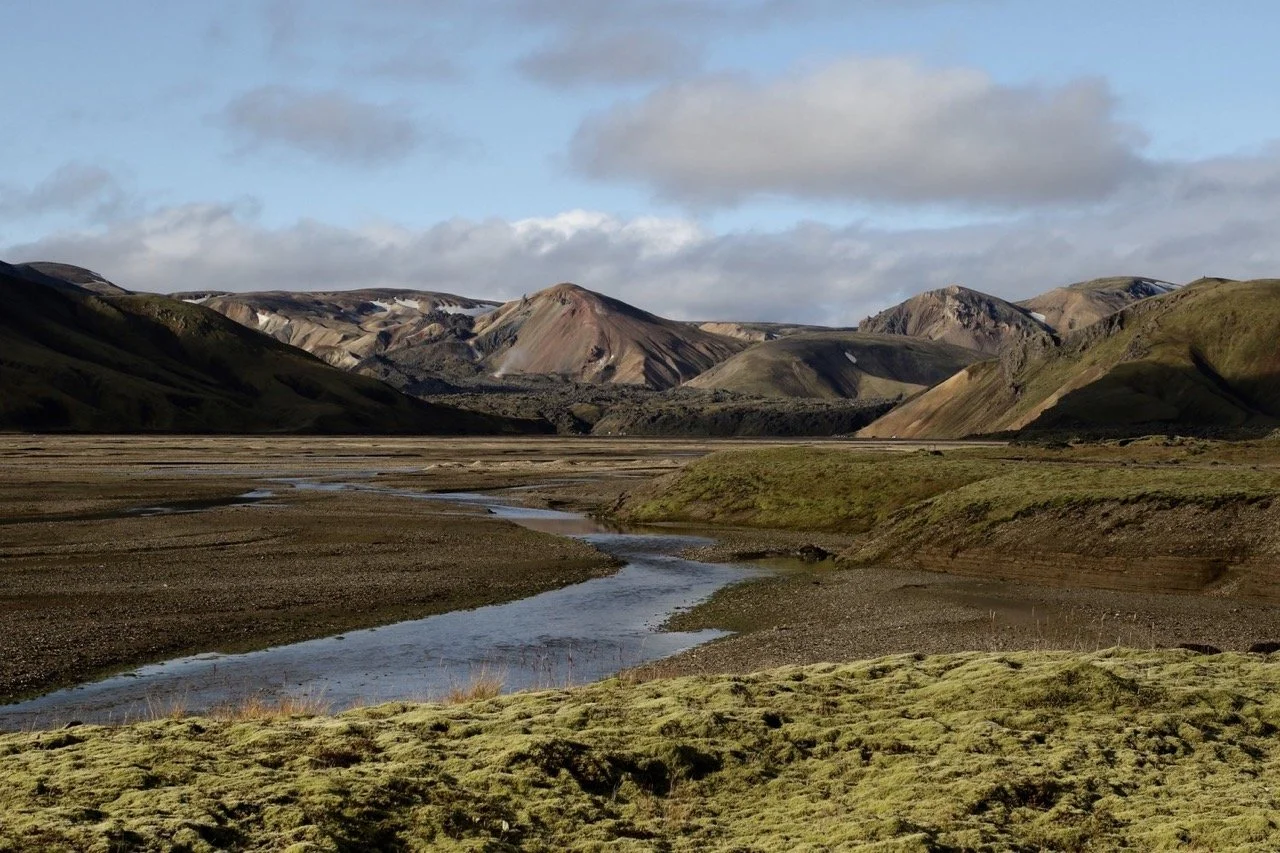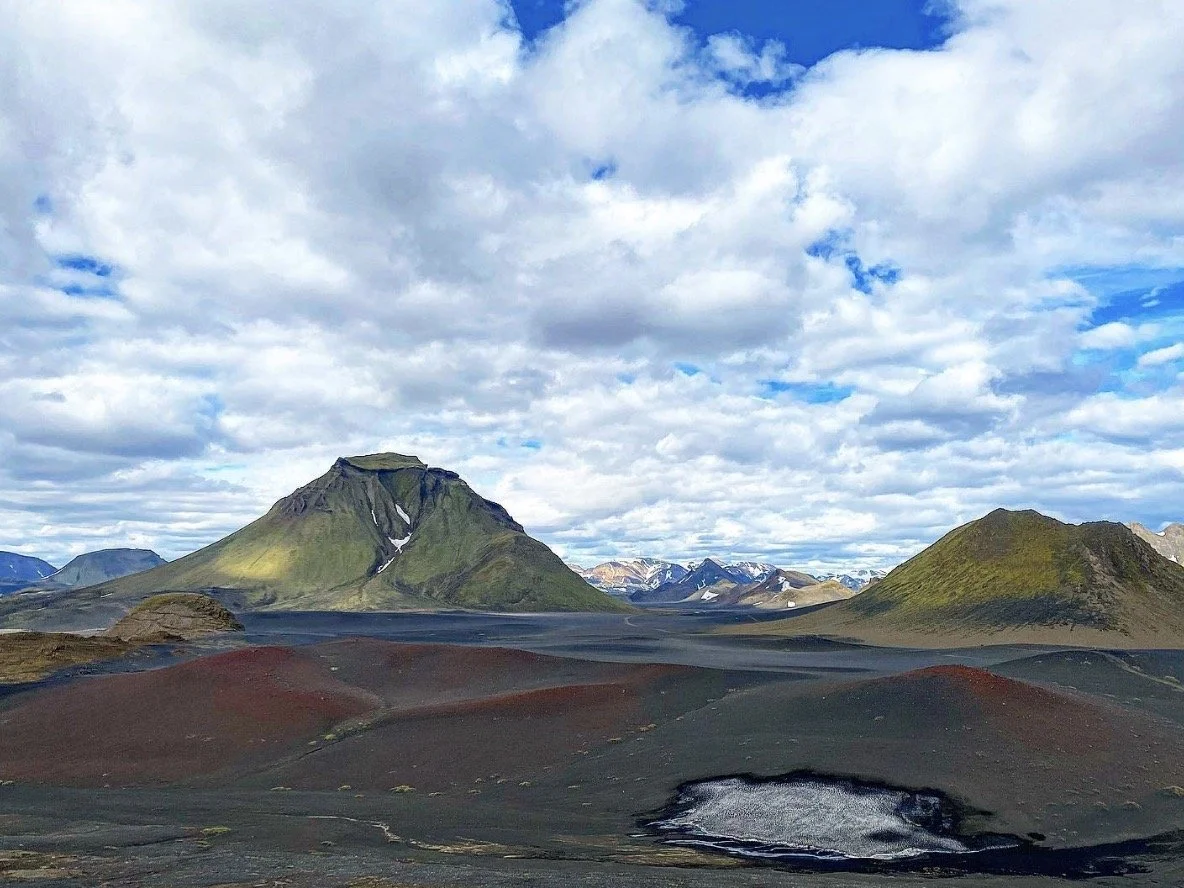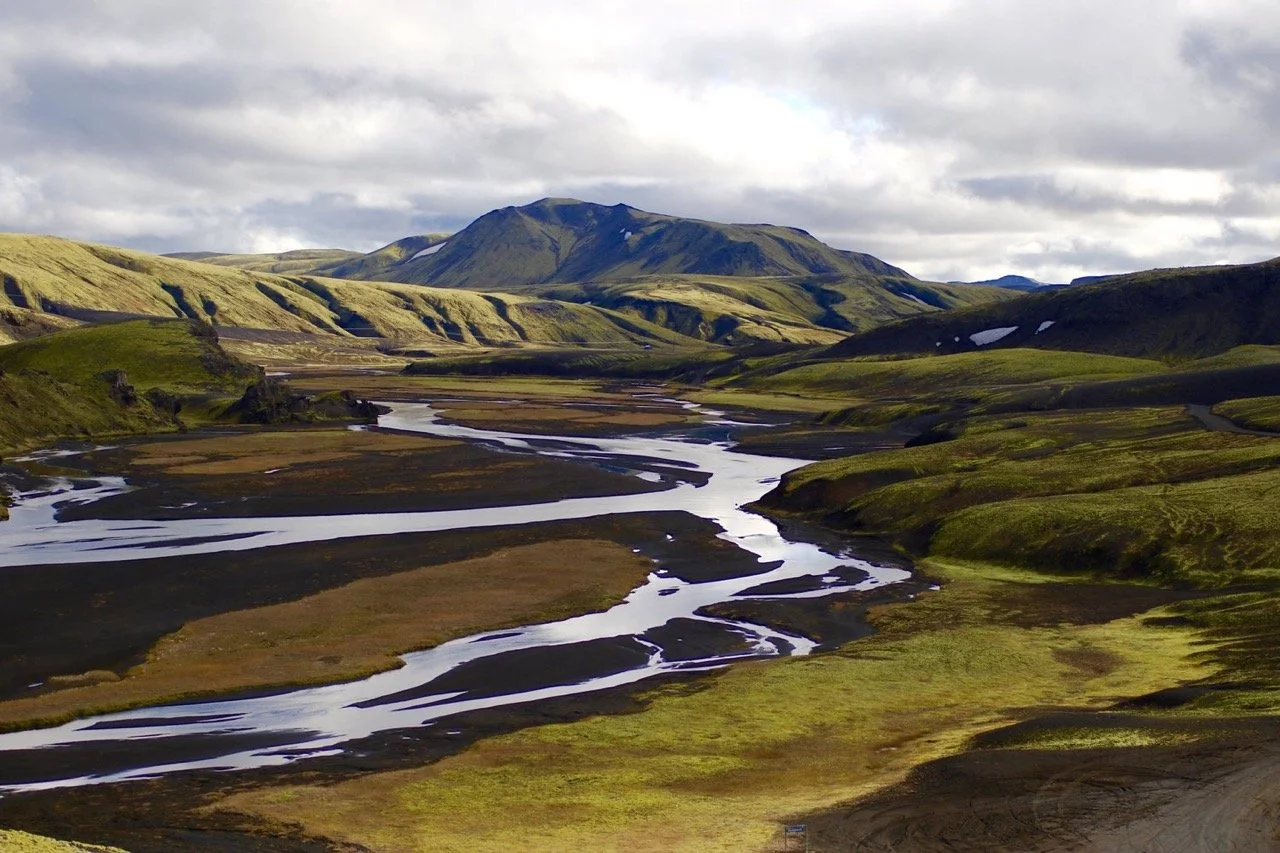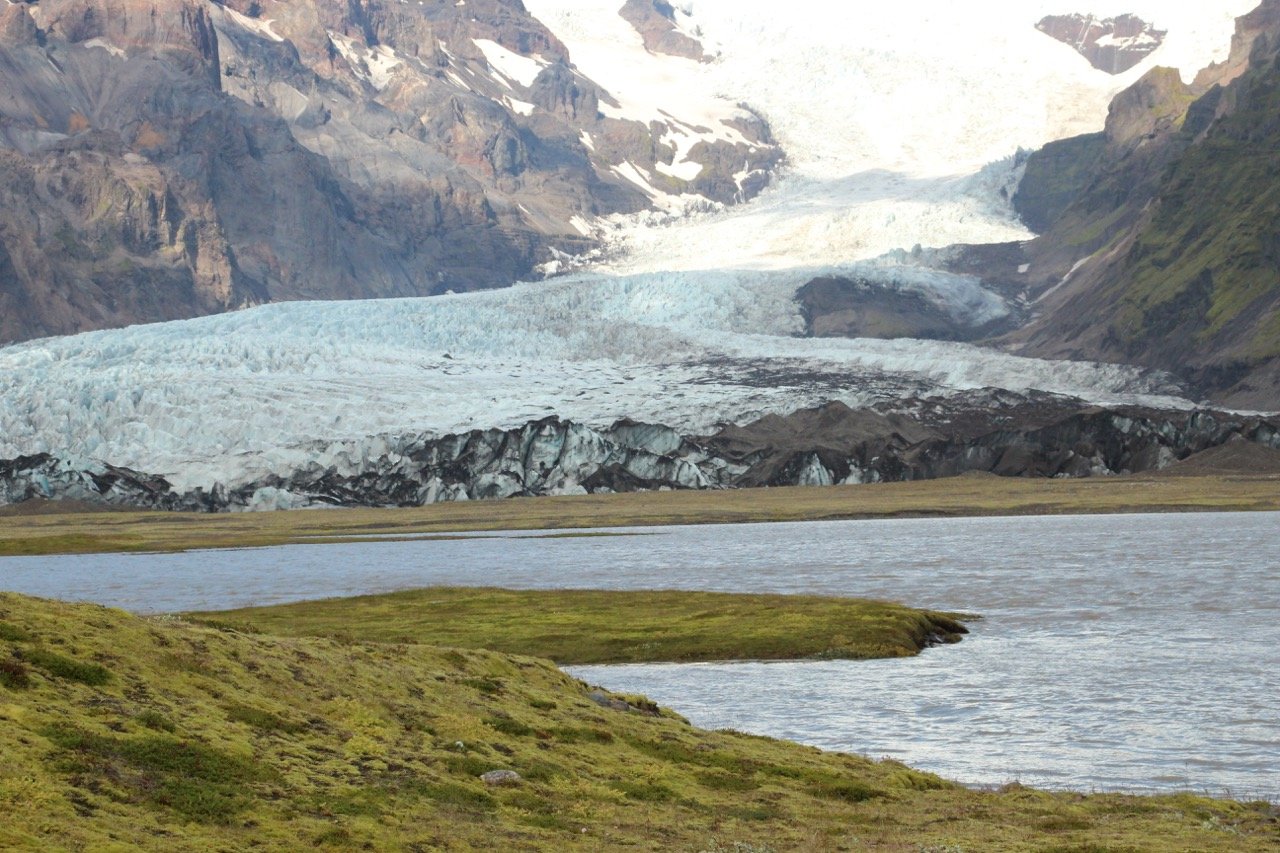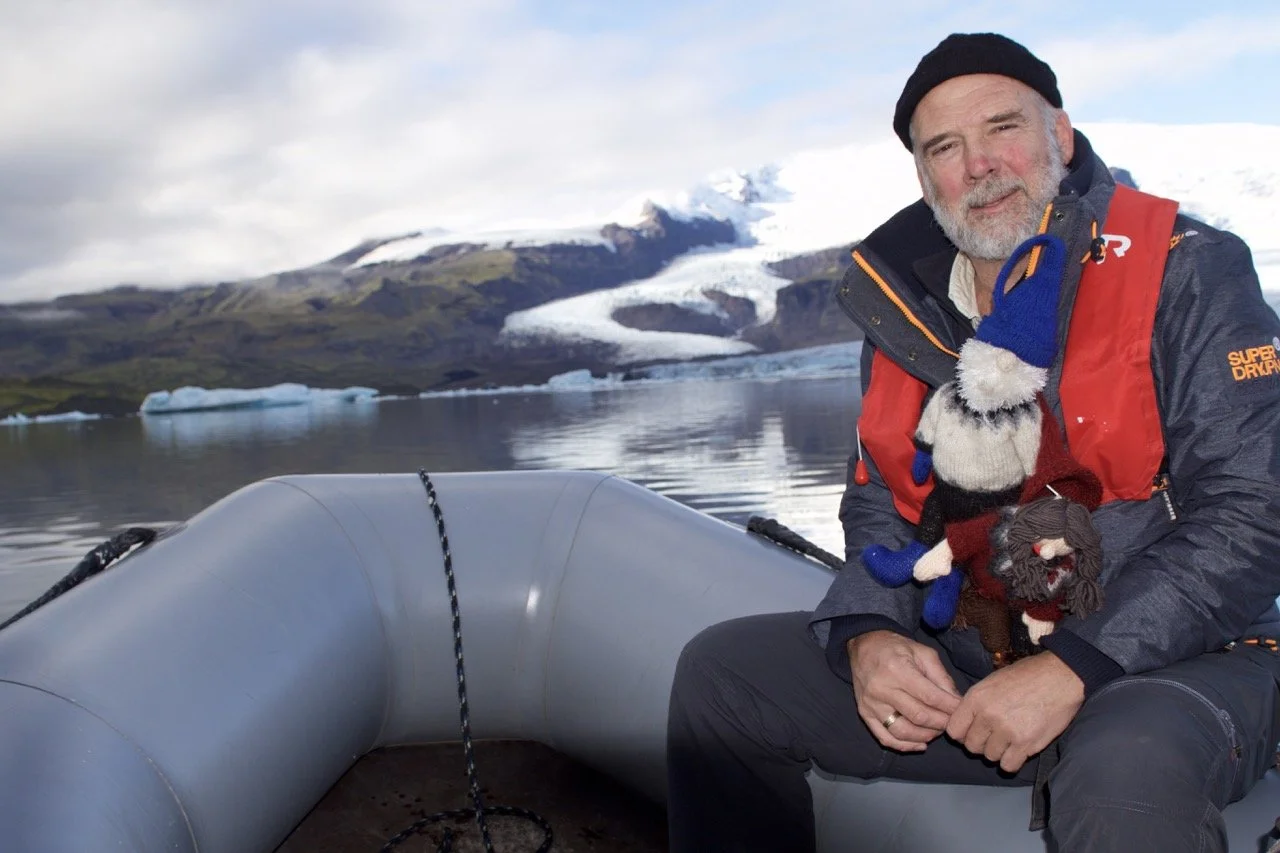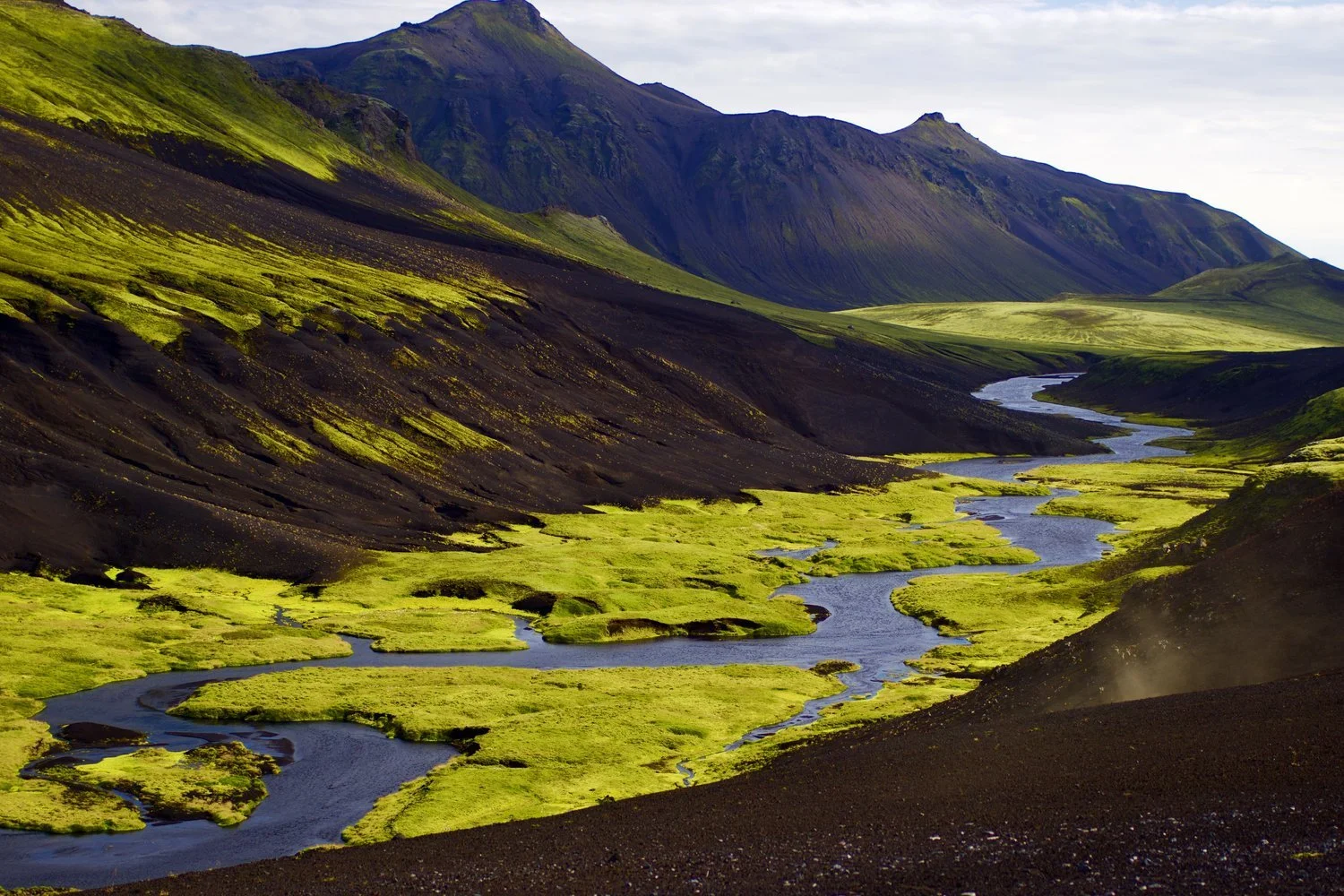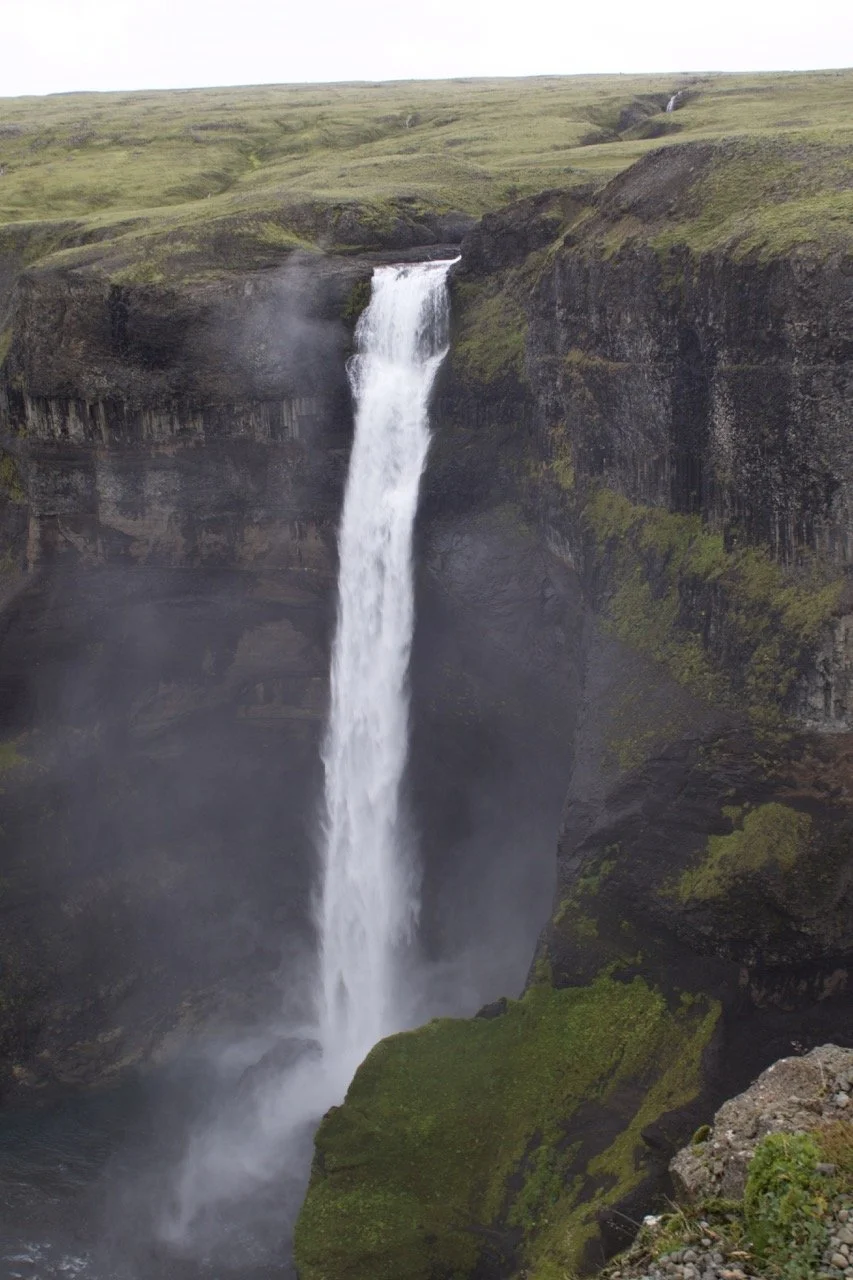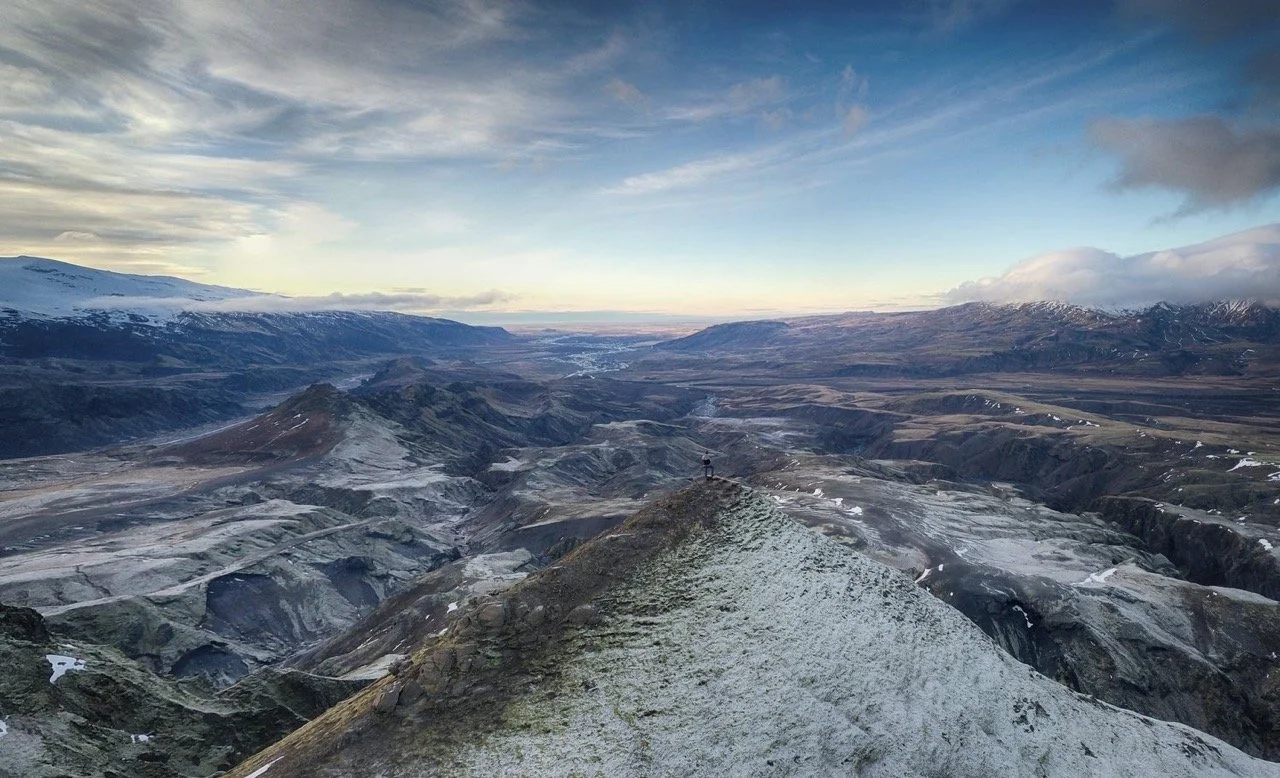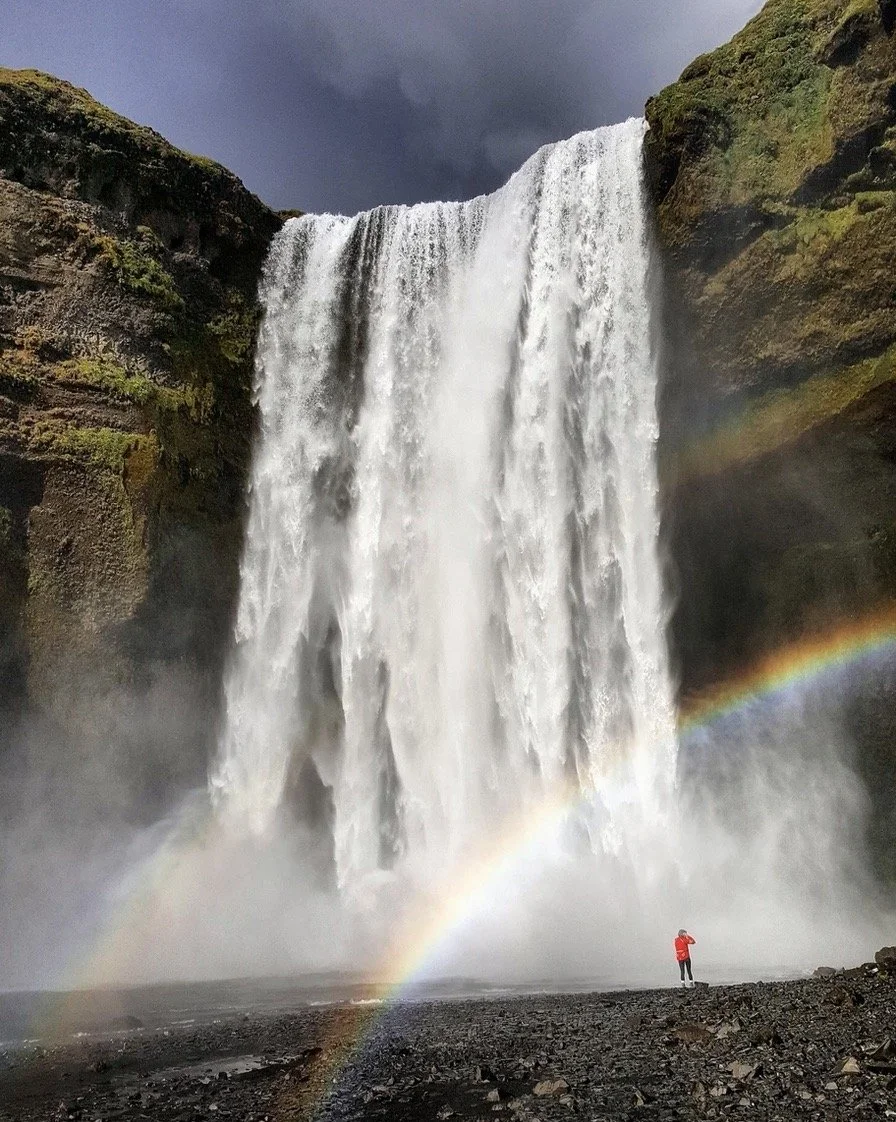A Local's 7-Day Iceland Itinerary - South Iceland & the Highlands
Affiliate disclosure: some of the links in this article are affiliate links. If you book using one of them, we’ll earn a small commission. All of our info is free to read and free of ads, so we appreciate it!
Dynkur waterfall in the Central Highlands
7 days in Iceland is not enough time to see everything, but with some good planning you can create an itinerary that gives you an excellent introduction to the country. So, to help you out, we spoke with veteran Reykjavik-based driver-gude Oli for his perfect one week itinerary in Iceland.
This 7-day Iceland itinerary is intended for first time visitors and it offers a good balance of the main highlights along with some off-the-beaten-path places with fewer crowds. The itinerary makes time for sightseeing, relaxing, outdoor activities, history & culture, and some exploring in more remote areas.
I’ve included some time in Reykjavik, a day touring the Golden Cricle, a few days on the South Coast exploring Vik, Reynisfjara, Skogafoss and lots of waterfalls, and then a few days in the highlands and F-roads, before heading over to Jokulsarlon, the glacier lagoons, Skaftafel, and Diamond Beach.
The days in the Southern Highlands would require a 4x4 vehicle and are best done with a guide or only for travelers experienced in driving in rough and remote terrain. Please remember that commercial rentals prohibit things like crossing rivers.
I’ve only listed a few of the many possible stops for each day, but it gives a good idea of what there is to see and the best order to do it in.
Table of Contents


Is 7 days enough time?
The beauty of a trip to Iceland is that you can have a great time no matter how many days you have. Even a 12-hour layover can be a great little visit.
So, is 7 days enough time for a good trip? Sure. It’s enough time to spend half a day in Reykjavik (which is really all you need), see the Golden Circle, get into the Highlands, and then explore the South Coast’s highlights like Vik, Reynisfjara, Vatnajökull park, Thórsmörk, and Diamond Beach.
If you cut out the highlands, 7 days is even enough time to see some of western Iceland, like Borgarfjörður and Snaefellsnes.
Itinerary overview
This itinerary is a bit different from most one week Iceland plans. Typically, those routes include Reykjavik, the Golden Circle, the South Coast, and then the Snaefellsnes peninsula. Those are all great parts of the country, but I wanted to give you the option for something unique.
So, instead of having you visit Western Iceland (i.e. Snaefellsnes - the part of west Iceland easy to reach from Reykjavik), I planned two days off the beaten path and deep in the Icelandic Highlands.
The Highlands are unlike anywhere you’ll have ever seen before. They’re remote, wild, imposing, and stunningly beautiful. Millenia of geologic activity have created a landscape that is completely otherworldly and you’ll see huge mountains, crater lakes, glaciers, martian-like plateaus, and raging rivers. While here, you’ll be able to hike, go off-roading, and bathe in natural hot springs, all with barely another soul around.
Where you’ll go
So, the itinerary starts with a day seeing the highlights of the Golden Circle. On your second day, you head off to Landmannalaugar in the Highlands for some hiking and great scenery (realistically this needs to be done with a guide). Your third day you descend from the highlands to explore the glaciers and lagoons of Vatnajökull park.
For day 4, it’s back into the highlands, this time in the Fjallabak Nature Reserve. Then, days 5 and 6 are spent in more leisurely fashion on the South Coast, exploring places like Vik, Reynisfjara beach, some waterfalls, and Þórsmörk national park.
Your last day is an easy one back in Reykjavik seeing the sights in the capital.
How to get around
Considering this is a road trip, you will of course need to have your own. To find a reasonably priced rental, I always recommend checking on Discover Cars.
Now, let’s take a look at the plan.
Day 1 - Reykjavik and Golden Circle
Today you'll spend the morning visiting Reykjavikl before exploring the Golden Circle on your way to the town of Flúðir.
So you know what to expect, be aware that the Golden Circle is Iceland’s most-visited route and the crowds are often shoulder to shoulder. While the sights are lovely, they are crowded and this is Iceland at is most touristy.
You’ll visit Thingvellir, Gulfoss, Geyser, Secret Lagoon, and some of Iceland’s most iconinc sights.
Brúarhlöð in the Golden Circle
Once you arrive to Reykjavik, I’d recommend grabbing you car rental at the airport and heading straight off for the Golden Circle.
I know that you’ll be tempted to visit Reykjavik, but you’ll have to come back to the city for your departing flight, so I think it makes the most sense to start with the road trip and then visit town on your last day.
Your first stop on the route is Thingvellir national park, Iceland’s first national park and the location where the North American and Eurasian tectonic plates meet. The Silfra fissure, where they meet, has become a popular spot for snorkeling. In the park, you'll get a mix of fascinating landscapes and a thousand years of Icelandic history - this is the spot where Iceland’s parliament was first formed over 1,000 years ago. In the park, you have hiking trails, fishing, and the aformentioned scuba diving,
After Thingvellir, continue on to the active geysers at the Geysir and Strokkur area. You can see bubbling mud pits, hot springs, and all sorts of interesting geothermal activity in addition to the geysers.
Next, carry on to the mighty Gullfoss waterfall. Over 2,000 people visit every day, so prepare for some crowds. Even so, once you see (and feel) the massive columns of water plunging over the 30+ meter drop, you won’t care how many people are around you!
As we move into the later evening, hop back in the car for a 30-minute drive to the Secret lagoon, where you’ll finish a day with a soak in the lovely (and less crowded) hot springs.
After a long day, spend the night in Flúðir which is just a few minutes’ from Secret lagoon.
*Some doable additional activities today could be horseback riding, fly-fishing, rafting, and kayaking.
Overnight in Flúðir
Flúðir is a cute town with a few good hotel options. It’s not as big or as busy as other towns near to the Golden Circle, but that means that hotel prices are generally much more reasonable.
Here are a few places I recommend:
Gardur Stay Inn - $250 USD.
Blue Hotel Fagrilundur - $160 - 350 USD.
Guesthouse Fludir - $165 USD.
Hill Hotel at Fludir - $150 USD.
Klettar Tower - $150 USD.
Day 2 - Icelandic Highlands: Landmannalaugar to Kirkjubæjarklaustur
Prepare for a packed day as you’ll be heading up into the southern highlands for some Viking history, spectacular waterfalls, secret hot springs, and great views amongst canyons, rivers, and volcanos in this stunning landscape.
You’ll pass through Landmannalaugar and finish in Kirkjubæjarklaustur.
Today is best done with a guide, but if you're going on your own make sure that you have a 4x4 and have spoken with someone knowledgeable to safely plan your route. Also make sure that your car rental contract and insurance covers you to drive on F-roads.
The hills and mountains of Landmannalaugar
The Fjallabak area near Landmannalaugar
The remote Fjallabak area
En route to the Highlands, begin with a drive along Route 32 up to the Gaukshöfði lookout point for fabulous views over the Þjórsá river and Þjórsárdalur valley.
From here, carry on to the beatuiful Hjalparfoss waterfalls where you should get out of the car and go for a walk. Next, head to Stöng farm, a preserved Viking-era settlement, where you’ll get to learn a bit about Icelandic history and traditions.
From the farm, make a detour up route 322 to Háifoss waterfall, one of many which you’ll pass on your route. Your next destination is an area with two gorgeous crater lakes, Hnausapollur and Ljótipollur.
Here, you're entering Landmannalaugar, an otherworldy geologic area with constant geothermal activity that is perfect for hiking, swimming, and secret hot spring hunting. To get to the crater lakes, you’ll be moving onto F-roads and following F-26 to F-208. There are river crossings on this route, so plan the route carefully with an experienced guide and only do it if you have off-roading driving experience.
The whole route is spectacular with scenery that will have you jumping out of the car every 5 minutes.
After Ljótipollur, your final stop of the day is the stunning Eldgjá canyon, located just a slight detour off F-208. From here, drive on to Kirkjubæjarklaustur to spend the night.
Optional activities today include lots of hiking, swimming, and natural hot spring relaxing.
Overnight in Kirkjubæjarklaustur
Kirkjubæjarklaustur is a tiny little town on the Ring road, between Vik and Hofn. It’s nearby to a wealth of natural attractions and makes for a very good base from which to explore the surrounding area.
A few of my tried and true hotels are below:
Hotel Klaustur - $200 USD.
Hunkubakkar Guesthouse - $200 USD.
Landbrot Guesthouse - $200 USD.
Day 3 - Skaftafell, Vatnajökull Park, and Diamond Beach
Today will bring you along the coast with a Zodiac boat ride on a glacier lagoon and lots of time time for kayaking, glacier walking, ice climbing, & ice caves. You’ll also have a chance to stop at Diamond Beach and do a little Puffin watching to finish the day. For accommodation, you'll spend another night in Kirkjubæjarklaustur.
Kvíárjökull glacier
Local guide Óli on zodiac boat in Fjallsárlón
Diamond Beach
You should start early, and before heading in the direction of Skaftafell, plan on a short hike into the awe-inspiring Fjaðrárgljúfur Canyon which is right near your hotel.
After your hike, get ready for something totally different as you drive to Skaftafell in Vatnajoküll National Park.
Here. you have the option for lots of short hikes (including one to Svartifoss waterfall), but for something more adventurous go to Svínafellsjökull glacier and try your hand at ice climbing or glacier hiking.
After a morning of outdoor adventure, double down with an afternoon of even more! Shoot over to the glacier lake Fjallsarlon for a Zodiac cruise in amongst the icebergs. Budget a couple hours here.
After your boat ride, it’s off to Fjallsaron’s bigger sister lagoon, Jökulsárlón, for some speedboating or kayaking. I recommend doing the Zodiac ride at Fjallsarlon instead of Jökulsárlón as the smaller lagoon is almost always less crowded.
After enjoying some time on the water at the lagoons, you should make some time for a visit to very famous Diamond Beach.
From here, you can wind down the day at Ingólfshöfði with a tractor ride for Puffin spotting.
Overnight in Kirkjubæjarklaustur
See my recommended hotels from Day 2.
If you want to stay right next to the park and lagoons, you could also consider two hotels:
Fosshotel Glacier Lagoon - $300 USD.
Hotel Skaftafell - $250-400 USD .


Day 4 - Fjallabak Nature Reserve
Today you are headed back into the Southern Highlands for some more off-the-beaten-path exploring as you make your way down towards Vik on the South Coast.
Deep in the Highlands
Háifoss waterfall
A professional guide crossing a river in the Highlands
Make sure to pack a picnic lunch today as there are no restaurants where you're going.
Ideally, hire a guide to join you as you head back into the Highlands by 4x4 en route to Hvolsvöllur via the South Fjallabak tracks. Be aware that even in summer you can encounter winter conditions in this region, so it is not the type of day where you can just “wing it”.
Driving through the Fjallabk reserve is one of the greatest experiences you can have in south Iceland and this unique and remote region is filled with gorges, glaciers, and rivers formed by constant volcanic activity over millennia.
This is also the location of one of Iceland's most famous Sagas, so it's a good idea to read up a bit ahead of time to fully appreciate the history in addition to the landscape.
Be prepared for some bumpy driving en route to today's first stop, Laki crater. It's an enormous volcanic fissure that bisects a mountain in Vatnajökull Park.
From here, drive to the Fjallabak Nature Reserve where you'll spend the day hiking and exploring away from the crowds.
Done with your hiking, grab your car and continue south. Marvel at the beautiful scenery as you follow the south tracks (South Fjallabaksleið) down towards Hvolsvöllur, where you'll be spending the night.
If you’re looking for a tour of the Highlands, connect with our favorite guide Óli, and chat about what you could arrange together.
Overnight in Hvolsvöllur or Hella
This part of South Iceland has a lot of accommodation options, with most of them being right along the Ring road. Because it’s so heavily visited, it’s also a relatively expensive part of the country to stay in. I’d recommend staying in/around the towns of Hvolsvöllur or Hella.
Hvolsvöllur is a little town on Iceland’s south coast. There’s not much here aside from the Laca Center museum and the Icelandic Saga Center, but you have all the basic services and amenities (hotels, gas station, grocery store, tour operators, etc.) and it’s a convenient location for accessing Þórsmörk National Park, which is where you’re headed tomorrow.
Hella is a somewhat larger town about 10 minutes away and situated on the banks of Ytri-Rangá River. It’s in a lovely setting; very picturesque and pastoral.
Here are some recommended hotels:.
Seljalandsfoss Horizons - $500 USD.
Hotel Rangá - $400 USD
Skálakot Manor Hotel - $300 USD.
Aurora Lodge Hotel - $250 USD.
Hotel Lækur - $150 - $280 USD.
Hotel Fljotshlid - $200 USD.
Brú Guesthouse - $150 USD.
Day 5 - Þórsmörk National Park
Your 5th day will be spent taking in the splendid scenery of Þórsmörk (Thorsmark) National Park. To minimize packing, you'll stay another night in Hvolsvöllur.
In the park, you’ll have your choice of hiking, ATV riding, or Super Jeep tours.
Þórsmörk (Thorsmark) National Park
As always, prepare for an early start so you can get into Þórsmörk National Park before the crowds begin to arrive.
Some major highlights today are can’t-miss Stakkholtsgjá canyon and Gljufrabui waterfall which many tourists overlook in favor of the much more famous Seljalandsfoss waterfall.
Þórsmörk has a fantastic selection of hiking trails, with all different lengths and difficulties. You can hike on your own, but there are also good tourist services so you can easily join a tour or arrange to have a private hiking guide accompany you.
For those wanting a little more action, you also have the possibility of doing ATV riding in the park, which is one of my favorite activities to do in Iceland.
Super Jeep tours are a possibility as well, but I think you’ll have more fun out in the open air on an ATV or your own two feet.
Towards the end of the day, plan on a short visit to the Lava Centre in Hvolsvöllur to learn about all the volcanic activity you've been seeing over the past 5 days.
Overnight in Hvolsvöllur or Hella
For hotel recommendations, see my list from Day 4.
Day 6 - Vik and more of the South Coast
After 5 days of hiking and outdoor activities, today is a more relaxing day to wind down the trip. You’ll visit Vik and enjoy an easygoing day along the South Coast before heading back to Reykjavik for your last night.
Reynisdrangar rocks seen from Reynisfjara beach (black sand beach)
Skogafoss waterfall
After a good breakfast, depart from your hotel in the direction of the town of Vik, stopping along the way at Seljalandsfoss and Skogafoss waterfalls for a walk/hike. While at Skogafoss, make time for a brief visit to the Skogar Museum.
After, head into town at Vik and enjoy a wander and lunch. You have a few good restaurant options in town and it’s your best bet for a lunch break, so take advantage of it.
After fueling up, make your way down to Reynisfjara black beach. Bear in mind, while the sand here is black, the name “black beach” used only in reference to this beach does not really make much sense as almost all of the beaches in Iceland are black!
Nearby you should detour to the Dyrhólaey peninsula for truly astounding views.
From Vik, it's about a 2.5 hour drive back to Reykjavik, though you should budget closer to 4 to give yourself time to stop at the two riverside towns of Hella and Selfoss en route.
After Selfoss, you’re on the road back to the capital for one final night in Iceland before heading home to foreign lands.
Overnight in Reykjavik
You have loads of hotels in Reykjavik and the city is small, so what area you stay in really doesn’t matter very much.
Day 7 - Reykjavik and departure
Somewhere in Southern Iceland
For your last day, I’d recommend booking yourself an evening flight so that you can see some of Reykjavik before you go.
Start the day with some sightseeing. Be sure to visit the iconic Hallgrimskirkja church, take a walk down the main commercial thoroughfare of Laugavegur, stop by the futuristic Harpa Concert Hall, and go for a walk through historic Reykjavik (the neighborhood located between Tjörnin lake and the harbor).
You’ll have time for a nice lunch, and maybe even dinner.
If you find yourself with extra time, you could also fit in a lovely visit to the Blue Lagoon, which is only 20 minutes by car from the airport.
Now, as they say, all good things come to an end and so too must your visit to my country. So, takk fyrir heimsóknina - thanks for visiting!
Remember, there’s lots more to see in Iceland, so if I can leave you with one piece of advice it is to resist the urge to overstuff your itinerary. Once you accept that you can’t see everything in just one visit, you can get to work on planning your fantastic holiday.
Happy planning and safe travels!


Where to stay during this itinerary
As this itinerary focuses entirely on Southern Iceland, I’ve selected 6 towns that serve as good potential bases.
Keep in mind, though, that Iceland is not like many countries that you’ve probably been to. There are very few cities and the country is sparsely populated. Towns are small, and, outside of the occasional museum or a good restaurant or bar, there’s really not much to do in most of them. The attraction is the countryside near to them.
With that, where you stay in Iceland really isn’t terribly important. If you’re doing a road trip, you shouldn’t choose your bases based on which towns you like the most. Instead, you should choose them based on where is most convenient for your sightseeing and driving.
Try to plan each base in a way that you minimizes your driving and maximizes your time outdoors (and your daylight).
Flúðir
Flúðir is a cute town with a few good hotel options. It’s not as big or as busy as other towns near to the Golden Circle, but that means that hotel prices are generally much more reasonable.
Gardur Stay Inn - Guesthouse with bright, spacious, and comfy rooms near the Secret Lagoon. A major bonus, all rooms have little kitchenettes in case you want to prepare your own meals. $250 USD.
Blue Hotel Fagrilundur - About 10 minutes away from Fludir and located right near the famous Friðheimar tomato farm and restaurant. $160-350 USD.
Guesthouse Fludir - Basic, but functional motel-style accommodation. $165 USD.
Hill Hotel at Fludir - Big, open rooms with comfortable beds and nice bathrooms. Free hot tubs on the property. $150 USD.
Klettar Tower - A fun option for a unique stay in a very curious property. $150 USD.
Hella
Hella is a little village about halfway between Reykjavik and Vik. It sits along the Ytri-Ranga river and makes for a good place to stop and spend the night after you’ve visited the Golden Circle or Secret Lagoon if your next destination is Vik or further east.
Hotel Rangá - One of few luxury properties that you’ll find in Iceland. $400 USD.
Hotel Lækur - A few minutes off the ring road with regular rooms and suites (cabins) that ideal for families or groups of friends. $150-$280 USD.
Hvolsvöllur
While nowadays Hvolsvöllur is just another little town in south Iceland, the area around it features prominently in the Icelandic Sagas and it was once a very important region. It’s home to two excellent museums: the Icelandic Saga Center and the Lava Center.
Seljalandsfoss Horizons - Out of the way, but worth it. Stylish two bedroom private cabins that ooze Scandinavian design dot a windswept patch of land. $500 USD.
Skálakot Manor Hotel - Chic farmhouse-style hotel with a sauna and glass-enclosed hot tub. $300 USD.
Aurora Lodge Hotel - Stylish boutique hotel that’s great for a romantic stay. $250 USD.
Hotel Fljotshlid - Simple but pleasantly renovated rooms on a working horse farm in the countryside. A good buffet breakfast includes many products produced on-site. $200 USD.
Brú Guesthouse - Spartan, but new and modern cabins with multiple beds and fabulous views. $150 USD.
Vik
Vik is a busy little hamlet on the south coast with a clutch of hotels and some good restaurants. It’s most closely associated with Reynisfjara beach, an iconic stretch of black send beloved by visitors.
Hotel Vik I Myrdal - New and modern hotel with lots of steel, glass, and wood. $350 USD.
Hotel Kría - The style here is pretty similar to Vik I Myrdal (although a bit simpler) and it’s also just a few hundred meters away. $230 USD.
Hotel Katla - Nothing fancy, but rooms are modern, spacious, and well maintained and the common areas have been nicely spruced up. $220-350 USD.
The Barn - Hostel with beds in small dorms as well as private rooms. $90-200 USD.
Kirkjubæjarklaustur
This tiny village (with an impossible to pronounce name!) doesn’t have anything to do in it, but that’s besides the point. The location is fantastic for visits to places like Vatnajökull National Park, Fjaðrárgljúfur canyon, and Landmannalaugar/Fjallabak Nature Reserve. It’s also one of the only places between Vik and Hofn that has amenities like a gas station and a grocery store.
Fosshotel Glacier Lagoon - This upscale hotel right next to the lagoon is a no-brainer if the price works with your budget. $300 USD.
Hotel Skaftafell - Basic for the price, but you’re paying for the location just outside Skaftafell. $250 USD.
Hotel Klaustur - Modern hotel with well-equipped, comfortable rooms, and a good location for a stop-over on your way to the next day’s destinations. $200 USD.
Hunkubakkar Guesthouse - Charming private cabins dotting an idyllic slice of countryside make this one of my favorite places to stay. $200 USD.
Landbrot Guesthouse - Brand new hotel with small, but immaculately clean and comfortable rooms outfitted with little kitchenettes. $200 USD.
How to get to Iceland
Getting to Iceland is easy, especially if coming from Europe or North America.
From Europe, you have direct flights from major cities like London, Paris, Milan, Amsterdam, and Vienna, as well as the capitals and major cities in Scandinavia (Denmark, Sweden, Norway, and Finland) and the Baltic nations (Latvia, Lithuania, and Estonia).
Most flights are offered via low-cost carriers like Play, Wizzair, Transvia, and Easyjet, but you also have plenty of connections with Iceland’s national carrier, Icelandair.
From the United States, you have non-stop flights to Iceland’s capital city of Reykjavik from Chicago, Minneapolis, Detroit, Raleigh, Washington DC, New York, Newark, Providence, and Boston. Flights are operated by United, Delta, American Airlines, Icelandair, and Play (a low-cost carrier).
Flights from the East Coast cities take 5-6 hours and roundtrip tickets can cost as little as $285 USD.
Flights from the Midwest typically take about 6 hours each way, and roundtrip tickets cost $400-800 USD.
From Canada, Icelandair offers one daily non-stop flight from both Vancouver and Toronto.
How to get around
Iceland is firmly road trip territory, so for any visit you really want to have your own car. While Iceland looks small on a map, it’s a pretty big island and getting between places takes time. For example, Reykjavik to Vik is 2.5 hours while Reykjavik to Damond Beach and the glacier lagoons is 5 hours each way. Not exactly day trip terriorty…
With this in mind, you really need to have multiple bases while visiting. Also, much of what you’ll want to see are natural places that you simply can’t access with public transport. If you don’t have a car, you’ll need to rely on expensive private tours or big bus group tours, which give you pretty minimal time at many sites.
That said, if you’ll only be visiting for a couple of days and want to base yourself out of Reykjavik and do day trips, that’s doable, at least in the summer months. In the winter, the limited daylight hours mean that having only one base and having to drive long distances from it means that you lose too much time (and too much potential daylight) in transfers. Additionally, road and weather conditions may make routes impassable, meaning that you can’t even get to your destination.
In short, for a visit to Iceland of anything more than just a few days, you need to rent a car. All the major international companies have offices in Iceland and you also have some large local companies like Blue Car Rental, which is highly regarded. The easiest place to pick up your car is at Keflavik Airport in Reykjavik.
Where to rent a car
DiscoverCars is a car rental website that I always recommend checking. It includes offerings from all the major international rental companies as well as lots of smaller local agencies, which often have much better pricing. You can frequently find terrific deals.
Best time to visit
The best time to visit Iceland entirely depends on your interests. If you’re looking to do cold weather activities and see snow, then obviously you should come in the winter. But for just about every other type of interest, you should come in summer.
Summer - The best time to visit for most people
In general, I think the summer is the best time for a visit to Iceland because you have warmer weather, 15-20 hours of daylight, the entire country is open and accessible, and you won’t encounter issues like road closures or unsafe weather.
Over the summer, you can hike in Iceland’s wild places, camp at pristine alpine lakes, ride ATVs on rugged trails, and do boat trips and kayaking by glaciers. There’s interesting wild life spotting and the landscapes are simply surreal.
For road trips, you have so much daylight that you can fill each day with 16 hours worth of activities. And because Iceland has glaciers year round, many of the activities that you’d do in winter you can still do even in the summer time.
Winter - For well-prepared cold weather lovers
Most people coming to Iceland want to do a road trip and/or visit sites that are far apart and require driving. If you come in winter, not only will you have very little daylight with which to accomplish this, but you also may have entire days that get washed out due to weather conditions and road closures.
Much of Iceland is also hard to reach or entirely inaccessible in the winter. The Highlands, for example, are essentially only open for a 3-month stretch in the middle of summer. You can’t usually visit them in spring or fall, and much less in winter.
The entire north of the country is also often covered under a blanket of snow and ice, making it hard to travel there and even harder to travel around if you can get there. And if you’re not used to absolutely frigid temperatures, heavy snow, and ice, the reality of Iceland in winter might not totally match up with your expectations for a “winter wonderland”.
That said, if you’re looking to do activities like snowmobile, climb through ice caves, walk on glaciers, see unparalleled winter landscapes, or just soak up the festive Christmas atmosphere, and you come well prepared and with reasonable expectations, then a winter visit should be fantastic!


More Iceland travel info
For more advice on planning your trip to Iceland, have a look at some of our other guides and itineraries!
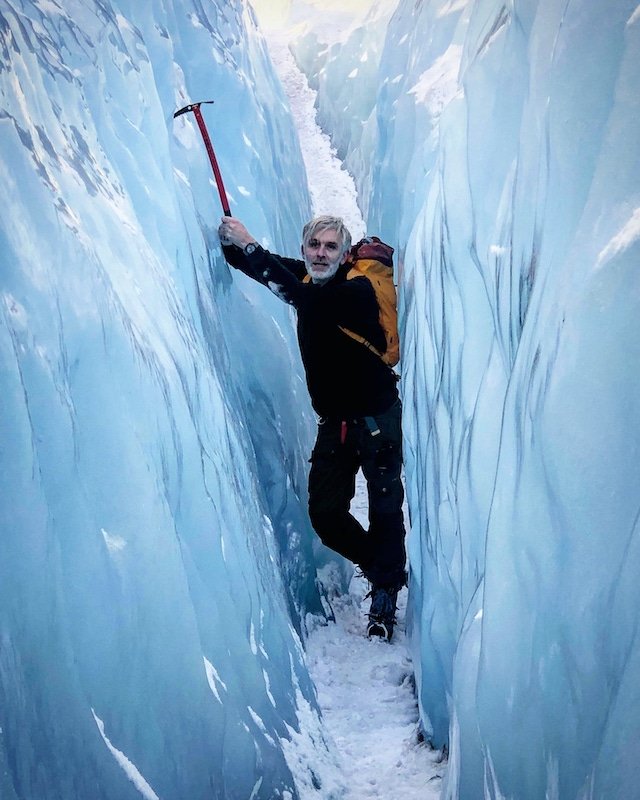
Connect with a Local Expert





